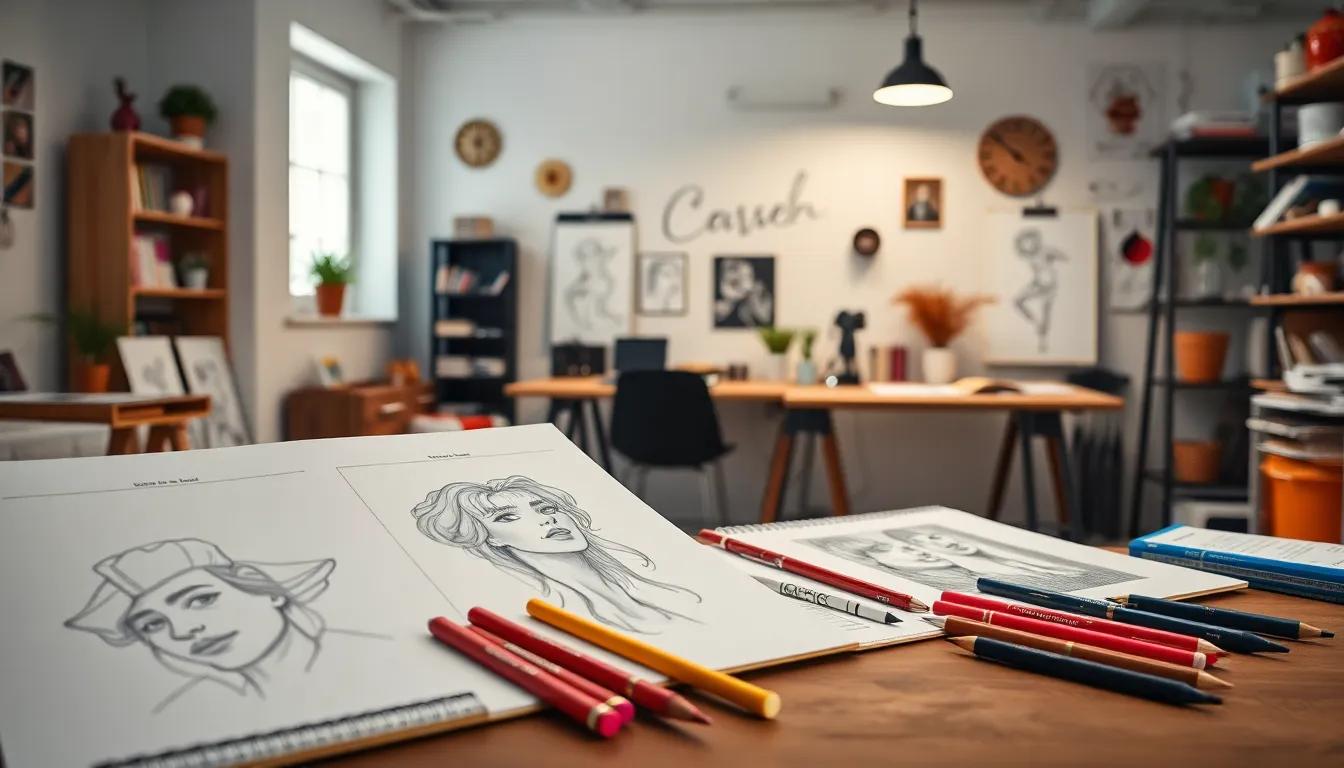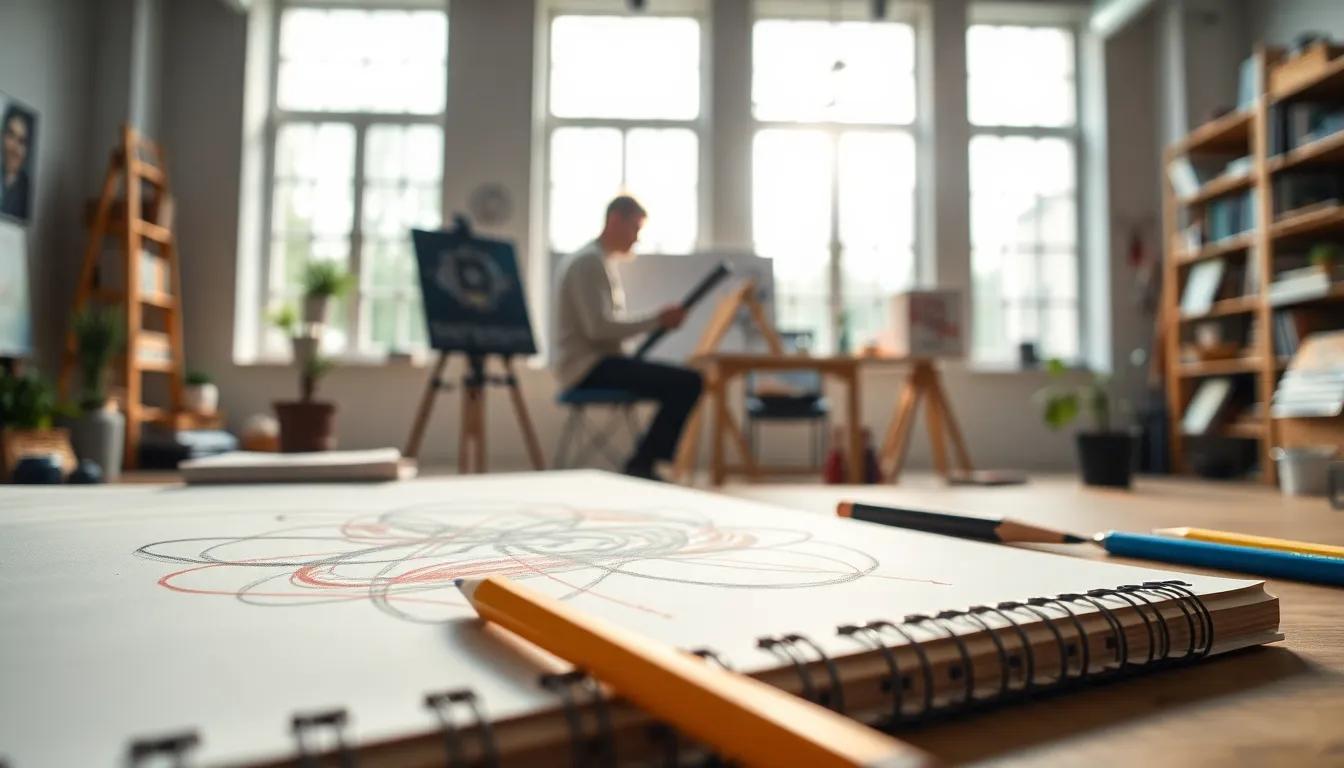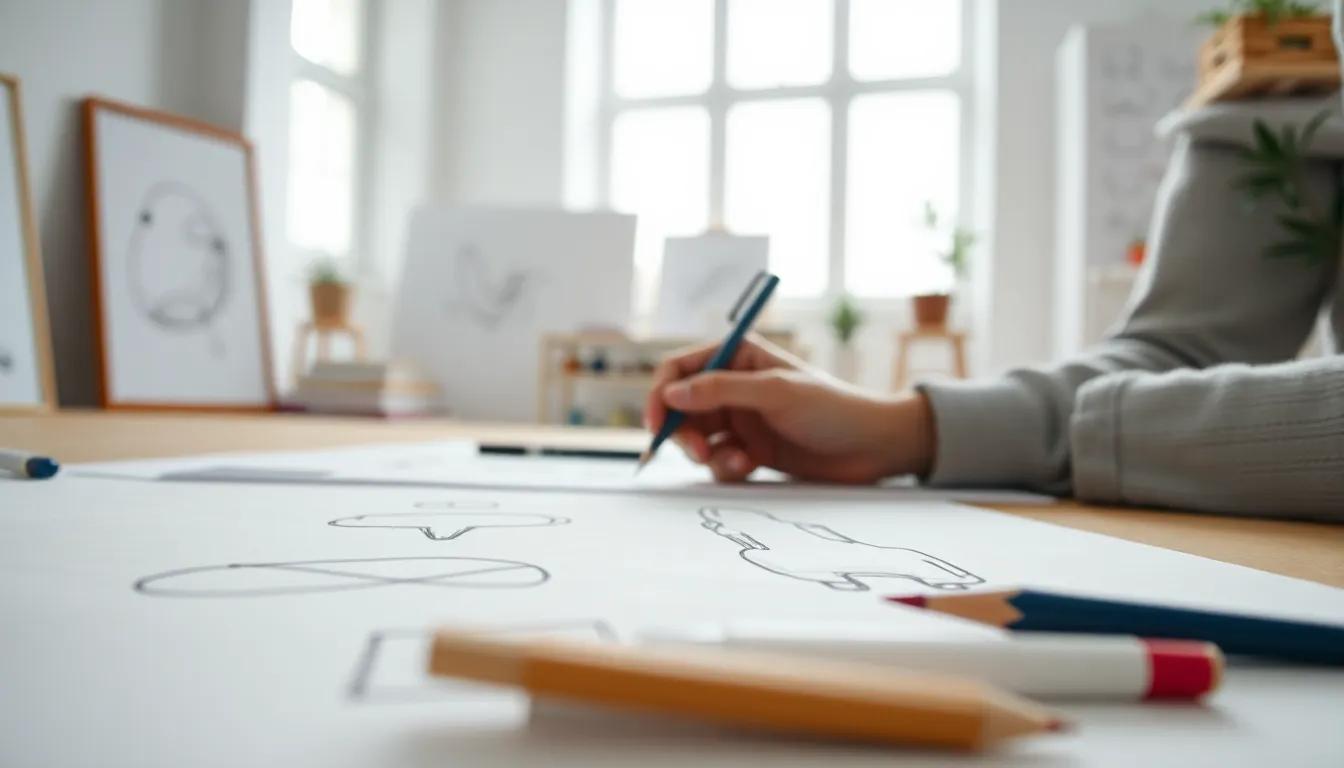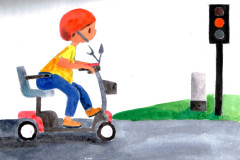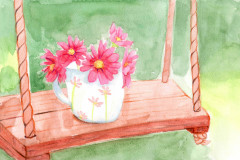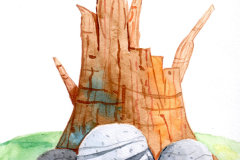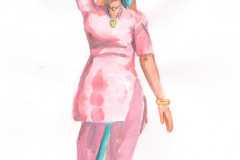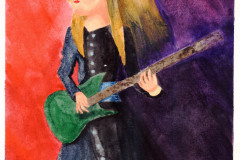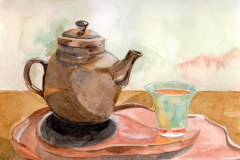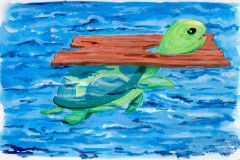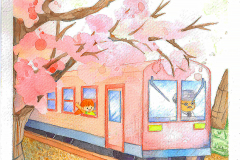Introduction
Drawing is a fundamental form of artistic expression that transcends mere representation; it allows individuals to communicate complex ideas and emotions through visual means. Whether you’re a beginner picking up a pencil for the first time or an experienced artist looking to refine your skills, understanding essential drawing tips can elevate your work significantly. This article explores various techniques, strategies, and insights that cater to all aspiring artists, empowering you to enhance your creative journey.
Throughout history, drawing has served multiple purposes—ranging from personal expression to a vehicle for professional communication in fields like architecture and design. Given the extensive range of tools and styles available, it can be overwhelming to know where to focus your efforts. From mastering basic techniques to exploring more advanced methods, this article will provide a comprehensive guide to drawing that is accessible, informative, and inspiring to artists at any level.
Understanding the Basics of Drawing Fundamental Concepts of Line Shape and Shadow
Drawing is the foundation of any artistic endeavor, and grasping the basics is essential for fostering creativity. One of the core elements of drawing is line. Lines are the building blocks of any drawing, capable of defining shapes, contours, and textures. They can be straight, curved, thick, or thin, each variation contributing to the overall impression of the artwork. Varying the pressure on your drawing tool allows for more dynamic expressions. Practice mastering line control by experimenting with sketches that involve different line weights, aiming for fluidity and confidence.
Shapes are formed by the lines that outline them. Understanding how to break down complex forms into simple geometric shapes can significantly aid in drawing accuracy. Whether it’s a still life or a portrait, identify the basic shapes which make up a subject—cylinders for arms, spheres for heads, or cubes for furniture. By starting with these simple components, you can build complexity gradually, leading to more successful representations.
Shadow adds dimension and depth to your drawings. It creates the illusion of volume, making flat shapes appear three-dimensional. To practice shadowing, consider the direction of your light source and how it affects various surfaces. Utilize different shading techniques, such as hatching, cross-hatching, and stippling, to convey texture and form. Observing how shadows fall in real life will give you greater insight into how to render them effectively on paper.
As for tools, the choice can alter your artistic style dramatically. Graphite pencils are popular for their versatility, allowing for fine details or broad strokes. Charcoal provides a deep richness and can be effortlessly blended, making it ideal for expressive works. Ink pens offer permanence and the opportunity to emphasize line work. Colored pencils allow for blending and layering, which can enhance both realism and stylistic flair. Each tool serves a unique purpose and brings a different character to your art, encouraging you to explore and experiment freely.
Understanding the fundamental concepts of line, shape, and shadow, alongside familiarizing yourself with various drawing tools, forms the backbone of your artistic journey. Mastery of these basics opens the door to richer, more complex expressions of your creativity.
Mastering Proportions and Perspectives
Understanding the Significance of Proportions
Proportions are the foundation upon which successful drawings are built. They refer to the relative size and scale of objects in relation to one another. Without accurate proportions, an artwork can appear distorted or unrealistic, regardless of how well other elements might be rendered. For example, a human figure depicted with disproportionately large hands or a small head may disrupt the viewer’s engagement, drawing attention away from the intended mood or message of the piece. Therefore, grasping the concept of proportions is essential for aspiring artists aiming to create compelling representations of their subjects.
One effective technique for achieving accurate proportions is to employ the “sight-sizing” method. This entails holding your drawing tool at arm’s length and using it to measure distances between key points of your subject. By comparing these measurements to the overall dimensions of your drawing, you can make adjustments to ensure accuracy. Additionally, understanding basic ratios can help; for instance, in average adult proportions, the body is roughly seven to eight heads tall. Keeping these ratios in mind provides a guideline that can simplify complex forms.
Creating Depth with Perspectives
Perspective adds another layer of complexity and realism to your drawings. It refers to the technique used to represent three-dimensional space on a two-dimensional plane. Mastering perspective is vital for any artist wishing to convey depth and distance convincingly. One-point and two-point perspectives are fundamental concepts that can transform a flat composition into a dynamic scene. In a one-point perspective, all lines converge at a single point on the horizon, whereas in two-point perspective, there are two such points, offering a more complex view of forms and spaces.
To practice perspective, begin with simple geometric forms, like cubes or spheres. Draw these shapes in both one-point and two-point perspectives, paying attention to how the positions of your vanishing points affect the overall shape. Gradually integrate more complex objects into your practice, utilizing these principles to generate a sense of space and dimension. Proper use of overlapping, size variation, and atmospheric perspective—where distant objects are depicted with softer edges and lighter tones—can enhance the illusion of depth in your artwork.
By honing your skills in proportions and perspectives, you will enrich your artistic repertoire, allowing for the creation of well-structured compositions that can resonate with your audience and elevate your craft even further.
Enhancing Drawing Skills with Observation
Observation is the cornerstone of developing drawing skills, serving as the bridge between what we see and how we translate that vision onto paper. The ability to accurately observe shapes, lines, and forms is paramount for any aspiring artist. When trained effectively, observation can significantly improve both eye and hand coordination, leading to more precise and expressive drawings.
The Role of Observation in Art
Observation goes beyond merely looking; it involves deeply engaging with the subject matter, taking note of details that often go unnoticed. Artists develop their skills by training their eyes to see variations in hue, saturation, and texture. This heightened awareness fosters an innate understanding of forms, allowing for more accurate representations. For instance, drawing from life provides an invaluable opportunity to study proportions, rhythm, and the interplay of light and shadow as you apply the techniques discussed in previous chapters.
Training Eye and Hand Coordination
To sharpen your observation skills, there are several techniques you can implement. Here are a few methods that can facilitate the development of your visual acuity and manual dexterity:
- Contour Drawing: Engage in continuous line drawings without lifting your pencil from the paper. This technique promotes a close examination of your subject, as your eye must follow the form while your hand replicates it.
- Negative Space Exploration: Instead of focusing solely on the object, pay attention to the spaces around it. This approach can help in understanding composition and balance, further enhancing your observational power.
- Squinting Technique: By partially closing your eyes, you can blur details and emphasize broader shapes and values. This practice helps in understanding overall structure and can be a powerful tool for simplifying complex subjects.
- Gesture Drawing: Spend a few minutes capturing the essence of a subject in quick sketches. This technique trains your hand to respond swiftly to visual cues, promoting fluidity and expressiveness in your drawings.
- Mirror Drawing: Place a mirror in front of your subject to observe it from a different angle. This shift in perspective can unveil new insights about proportions and relationships within the form.
Integrating these techniques into your routine will not only enhance your drawing skills but will also enrich your artistic practice. As you continue to refine your observation, you’ll find that your ability to depict light and shadow, as will be explored in the following chapter, becomes increasingly sophisticated, contributing to the overall depth and realism in your work.
Incorporating Light and Shadow to Enhance Your Drawings
Understanding the Role of Light and Shadow
Light and shadow are fundamental elements that inject life into your drawings, creating the illusion of three-dimensional form. The interplay between these two components not only adds depth but also conveys the time of day, mood, and environment. When artists master the manipulation of light sources, they can evoke compelling narratives and evoke an emotional connection with viewers. Recognizing the direction and quality of light allows for a more accurate representation of objects, creating an integral layer of realism. Without a keen understanding of how light behaves, artwork can often appear flat or lifeless.
Techniques for Rendering Shadows Realistically
To capture shadows accurately, consider these essential techniques. First, observe the light source. Is it direct, like sunlight, or diffused, like overcast skies? The clarity and harshness of the light will dictate how sharply defined the shadows appear. Generally, direct light will create more defined edges, while diffused light leads to softer, more gradual transitions.
Study the objects you’re rendering. Shadows often take on unique forms dictated by the subject’s contours and textures. Look for shadows’ shapes; they don’t merely fill in areas but follow the object’s outline, amplifying its form. You can create softer edges in shadow areas with gentle blending using your drawing tools, like blending stumps or tissue paper. Conversely, for deep shadows, employ a firmer hand with your pencil or charcoal application to achieve richer darkness.
Experimenting with the pressure you apply to your drawing medium is vital. Adjusting the intensity of your strokes can create a stunning contrast within shadows, thereby making highlights pop. Consider using a range of values from dark to light; this gradient is pivotal in achieving a convincing representation. Also, remember that sometimes less is more. Overworking shadows can lead to a muddled effect, diminishing their impact.
Practice viewing objects in terms of large light and shadow masses rather than getting lost in minute details early on. This approach will enhance your ability to see the overall composition and how shadows integrate with the broader context of your drawing. As you refine your techniques, you’ll find that incorporating light and shadow effectively allows you to depict not just objects, but emotions and atmospheres.
Experimenting with Different Styles Finding Your Artistic Voice
Exploring Various Techniques and Their Impact
For artists seeking to refine their skills, experimenting with different drawing styles can be an illuminating experience. Each style offers a unique perspective and set of challenges that can broaden your artistic toolkit. From realism to abstraction, the variety of methods available invites you to step outside your comfort zone and discover new approaches. Engaging with diverse techniques not only expands your capabilities but also fosters creativity and innovation.
One effective way to start this exploration is by dedicating a sketchbook specifically for experiments. Use it to try out techniques like cross-hatching, stippling, or freeform mark-making. By dedicating pages to different styles, you can easily compare the results and determine which resonate with you. Remember, this is not merely about producing finished works but about the process of discovery. Allow yourself to make mistakes; these often lead to some of the most significant breakthroughs.
Identifying Your Unique Style
As you venture deeper into the world of different drawing styles, you’ll likely notice some themes emerging in your work. These consistencies are key indicators of your personal style. Perhaps you find yourself gravitating toward bold, expressive lines or soft, delicate shading. Recognizing these preferences can be the first step toward establishing an artistic identity distinctively yours.
Participate in workshops or online challenges where you can adopt a variety of styles and techniques. This interaction can spark inspiration and provide valuable feedback from peers, encouraging you to push the boundaries of what you typically create. Engaging with a community fosters a collaborative spirit, making the journey of self-discovery more enriching.
When attempting new styles, be sure to reflect on how they influence your overall artistic vision. Analyze what you enjoy about each technique and how they allow you to express your thoughts and emotions. This introspection can help solidify what you want to incorporate into your personal style and inform your future projects.
Experimenting with different drawing styles is not just about adopting new methods; it is about honing in on who you are as an artist. The insights gained through this exploration will ultimately contribute to your growth and proficiency, preparing you for the next pivotal stage of your artistic journey—creating effective compositions.
Artistic Composition Techniques Creating Effective Compositions in Drawing
Fundamental Principles of Composition
Composition in drawing is a pivotal element that can significantly influence the viewer’s perception and understanding of a piece. An effective composition serves to guide the viewer’s eye and evoke emotion, creating a visual narrative that captures attention. To achieve a harmonious arrangement of elements, several key principles can be employed.
One of the cornerstones of composition is the rule of thirds. Visualize your canvas divided into nine equal parts by two horizontal and two vertical lines. By placing focal points along these lines or at their intersections, artists can create a balanced yet dynamic composition. This technique not only enhances visual interest but also encourages movement throughout the artwork.
Another essential element is the use of balance, which can be achieved through symmetry or asymmetry. While symmetrical compositions impart a sense of formality and stability, asymmetry often injects energy and spontaneity, making the piece more engaging. Understanding how weight is distributed across the drawing is crucial; heavier elements should be compensated with lighter visual components to maintain equilibrium.
Utilizing Space and Focal Points
Negative space, or the space surrounding your subject, plays an important role in composition. It can enhance the main subject by allowing it to breathe, drawing attention to key areas without overwhelming the viewer. Thoughtful consideration of positive and negative space helps to prevent clutter, resulting in a cleaner and more focused artwork.
Establishing a clear focal point is vital in directing the viewer’s gaze. This can be achieved through contrast, color, or size. A brighter color in a darker environment can be particularly effective in highlighting the main subject. Employing leading lines, such as pathways or edges within the composition, directs attention to the focal point, creating a natural flow that guides the viewer’s eye.
Mastering composition involves not just the application of these techniques but also the ability to experiment and adapt them to your unique style. As artists grow, they may find distinct ways to manipulate these principles, thereby forging a personal connection with their audience while harnessing creative freedom. The insights gained from effective composition will equally enrich both traditional and digital drawing practices, providing a solid foundation for expression in any medium.
The Impact of Digital Drawing Tools
Revolutionizing the Drawing Process
The advent of digital drawing tools has significantly reshaped the landscape of artistic creation. Artists now have access to an array of software and devices that allow for a more versatile and dynamic drawing process. Traditional mediums such as pencil, ink, and paint still hold their charm, but digital platforms offer unique advantages that can enhance creativity and efficiency. For instance, artists can easily experiment with various techniques without the fear of wasting materials, something that can be particularly liberating for those just starting out.
One major advantage of digital tools is the ability to easily undo actions. This feature allows artists to explore their ideas more freely, making bold choices without the apprehension traditionally associated with irreversible strokes on paper. Additionally, layers provide an invaluable resource for refining artwork. By isolating elements of a drawing, artists can manipulate components individually, giving them the flexibility to make adjustments that would be time-consuming or impossible in a traditional setting.
Digital tools often come with expansive libraries of textures, brushes, and colors, enabling artists to experiment with styles that might require extensive training or resources in conventional mediums. For instance, an artist can simulate watercolor effects or chalk pastels with just a click, broadening their horizon in the quest for a personal artistic voice.
Challenges of Digital Drawing
Digital art can sometimes create a disconnect with the tactile experience of drawing. Many artists cherish the physical relationship they have with their materials—the weight of a pencil in hand or the smooth glide of a brush across canvas. This intimate experience can be diluted when working on a tablet or screen, potentially impacting the emotional connection to their work.
Continual Learning and Seeking Feedback
Embracing Growth in Your Art Journey
Art is not merely about talent; it is a continuous journey characterized by persistent learning and self-improvement. For aspiring artists, understanding the importance of continual learning is vital to unlocking full creative potential. Experimenting with different techniques, materials, and styles is fundamental. Every sketch or painting provides an opportunity to refine your skills, expand your artistic vocabulary, and develop a deeper understanding of the visual language.
Engagement with various resources can facilitate this learning process. Books on art theory, instructional videos, and online workshops can introduce new methods and perspectives. Joining local art classes or online communities can also provide exposure to different artistic approaches. Engaging in critiques and discussions with fellow artists not only nurtures your skill set but also enhances your ability to articulate your artistic vision.
The Power of Constructive Feedback
Seeking feedback is equally important in your artistic development. Critics often see nuances in your work that you may overlook. Constructive input can highlight strengths while pointing out areas for improvement. Cultivating a mindset that welcomes criticism enriches your artistic journey. Whether from instructors in a class or peers in an online forum, feedback serves as a mirror reflecting your progress, enabling you to adjust your techniques and broaden your understanding.
It is essential to approach feedback with discernment. Not every critique will resonate, and it is important to differentiate between helpful advice and subjective opinions. Focus on feedback that aligns with your goals as an artist. Learning to accept criticism graciously can empower you, transforming perceived shortcomings into opportunities for creativity and growth.
Artists should engage with self-assessment. Reflecting on your work by keeping an art journal can enhance your awareness of growth and challenges faced over time. Documenting your artistic journey fosters a sense of accomplishment and encourages a constructive dialogue between you and your artwork.
The fusion of continuous learning and feedback will not only elevate your technical abilities but also enrich your artistic voice. As you evolve, you will likely find new ways of expressing your ideas, enriching the visual narrative you create with each drawing.
Conclusions
Honing your drawing skills is a journey that involves practice, patience, and a willingness to learn from both successes and failures. By applying the essential drawing tips outlined in this article, you can build a strong foundation that will serve you well throughout your artistic endeavours. Remember that every artist’s path is unique and that the exploration of different techniques will only enrich your understanding and appreciation of the art of drawing.
As you continue to develop your skills, don’t hesitate to experiment, take risks, and seek feedback from fellow artists. Drawing is not just about creating pretty pictures; it is about expressing your distinct perspective and emotional experience. Embrace the journey and allow your creativity to flourish, for every mark you make is a step towards becoming the artist you aspire to be.

